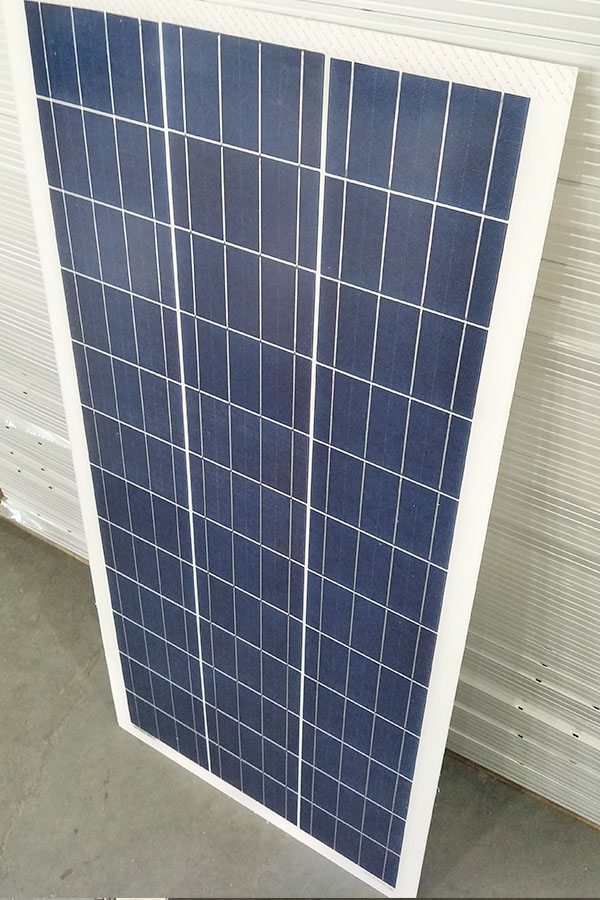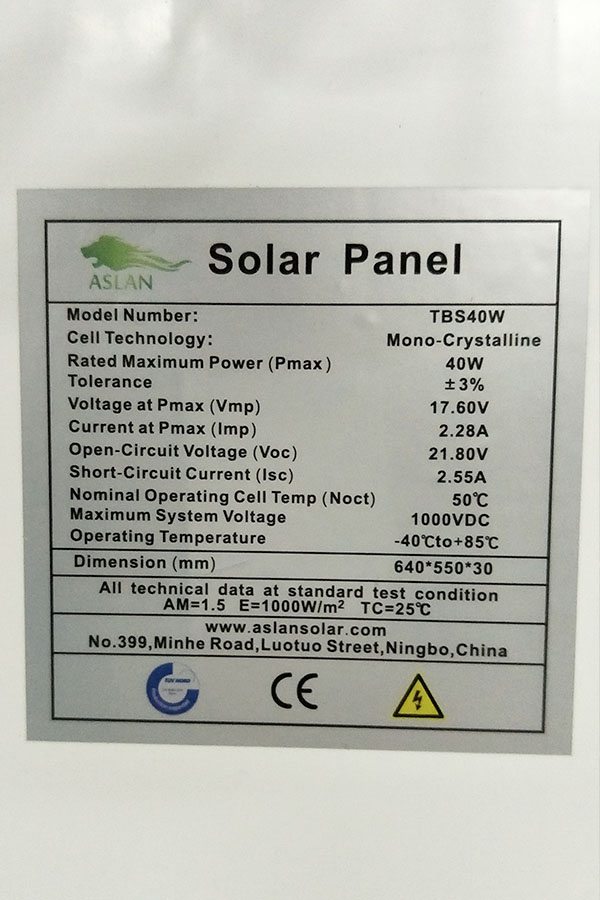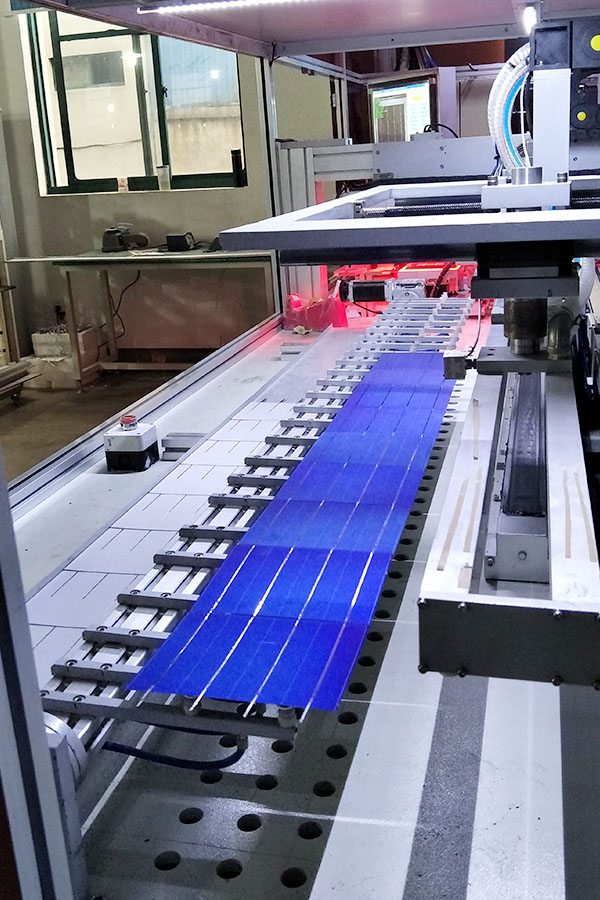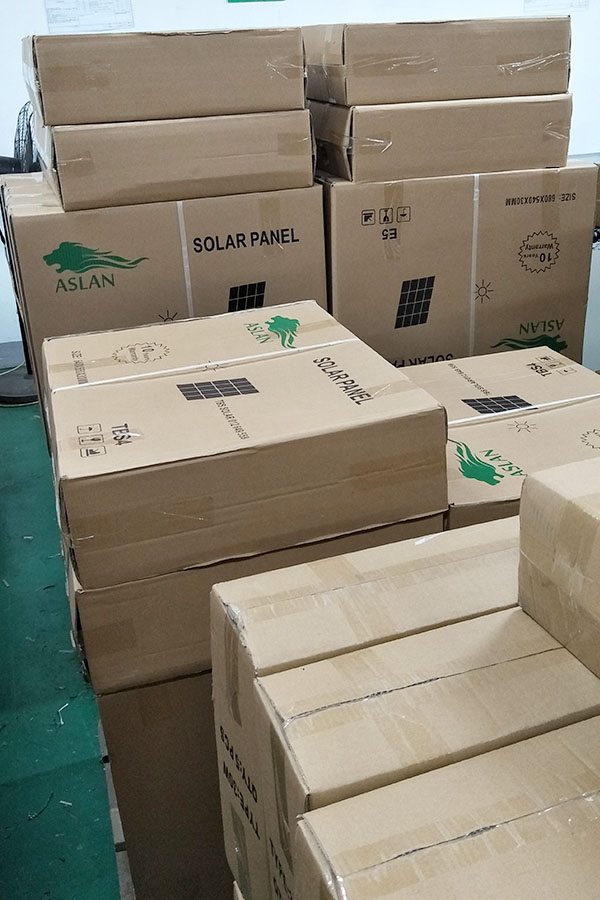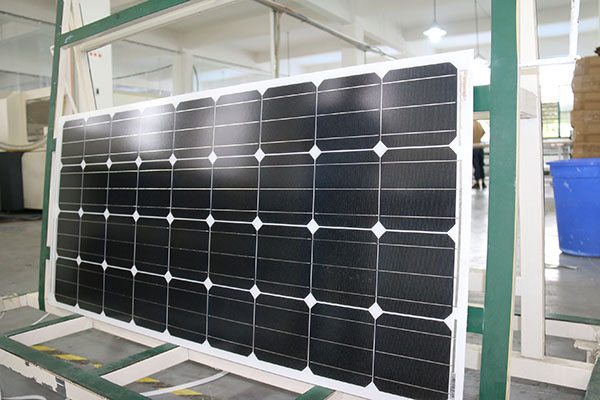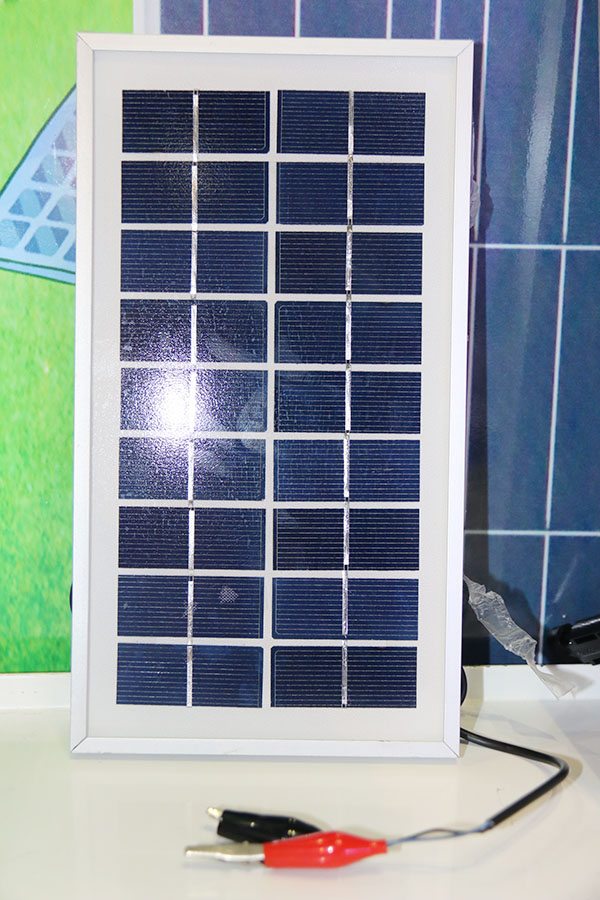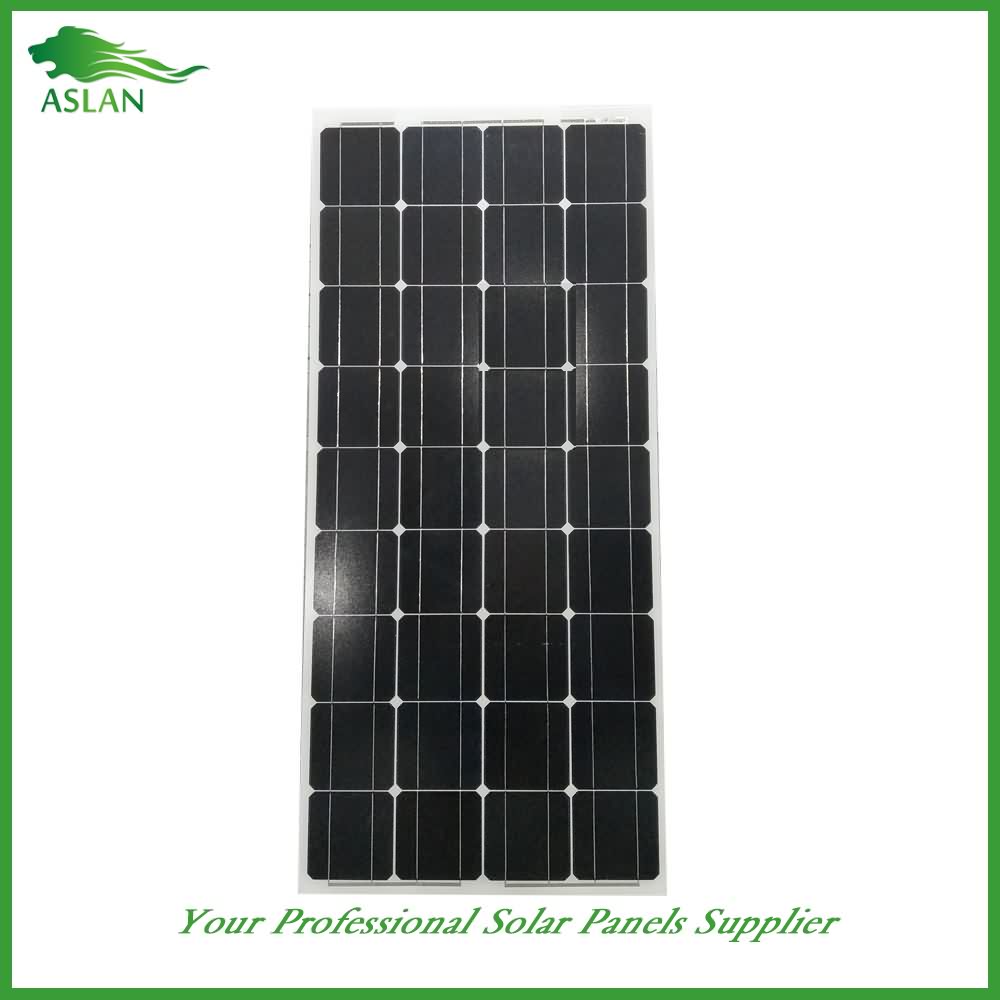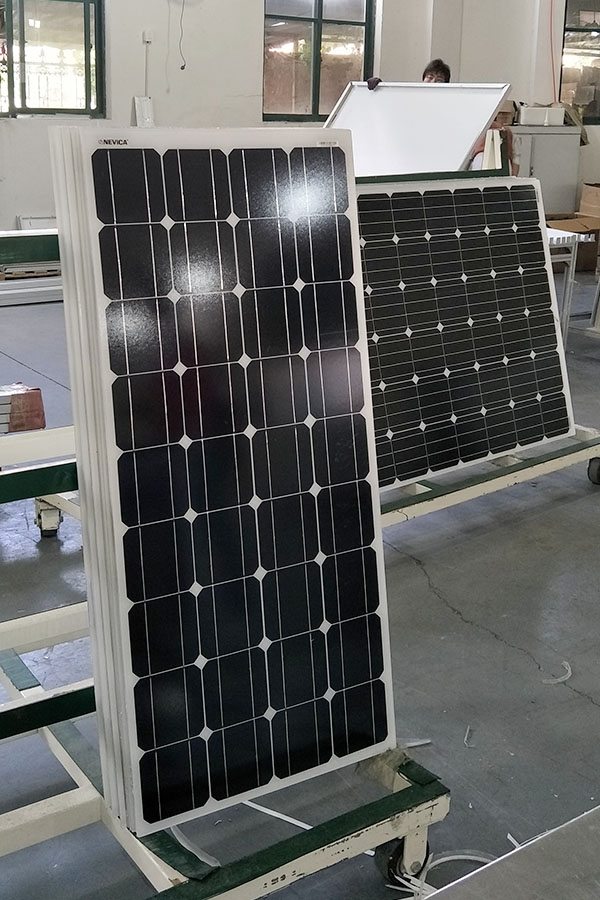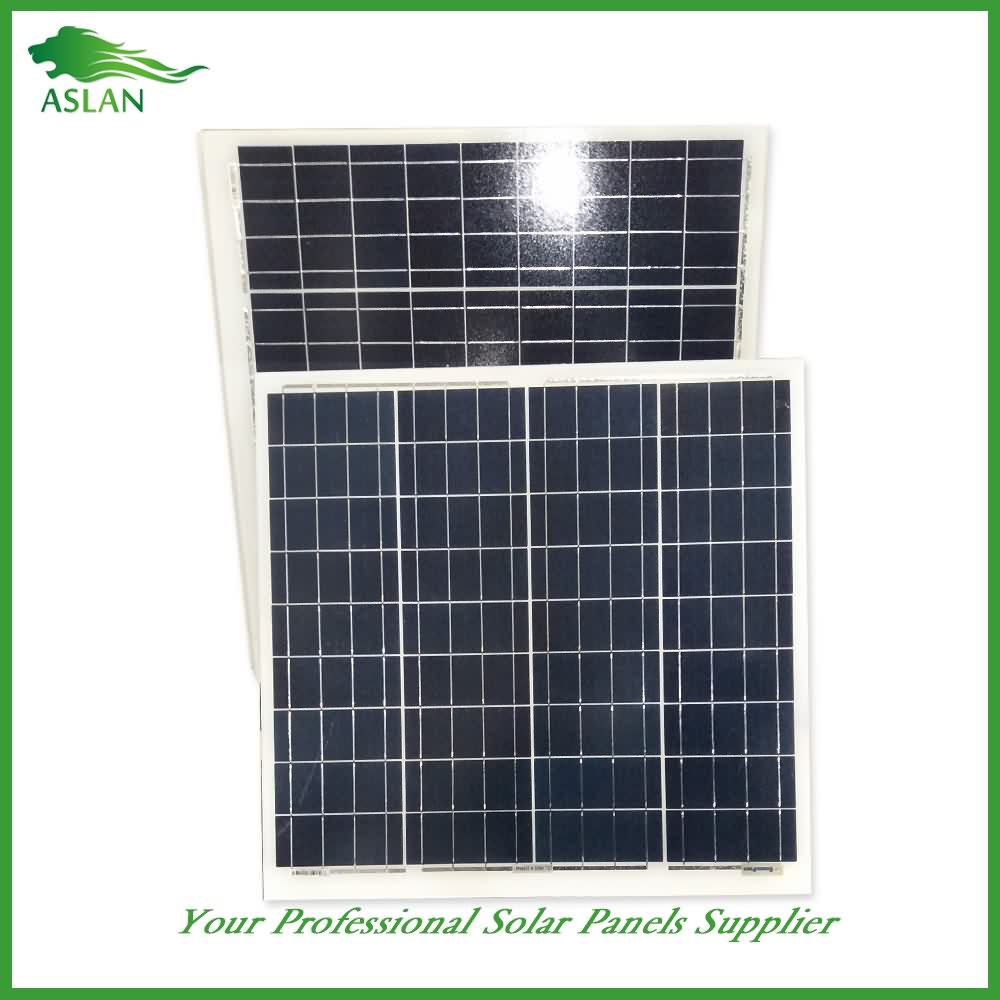Factory Outlets Poly-crystalline Solar Panel 80W in Haiti
Short Description:
We emphasize development and introduce new products into the market every year for Factory Outlets Poly-crystalline Solar Panel 80W in Haiti, We welcome customers, business associations and friends from all parts of the world to contact us and seek cooperation for mutual benefits.
Poly-crystalline Solar Panel 80W
Technical parameter
Maximum Power(W) 80W
Optimum Power Voltage(Vmp) 18.13V
Optimum Operating Current(Imp) 4.70A
Open Circuit Voltage(Voc) 21.79V
Short Circuit Current(Isc) 5.16A
Mechanical Characteristics
Cell Type Poly-crystalline 156x104mm (6 inch)
No of Cell 36 (4x9pcs)
Dimensions 1008x678x35mm
Weight 8.3KGS
Front Glass 3.2mm,High Transmission, Low Iron,Tempered Glass
Junction box IP65 Rated
Output Cable TUV 1×4.0mm2/UL12AWG,Length:900mm
Temperature and Coefficients
Operating Temperature(°C): -40°C ~ + 85°C
Maximum System Voltage: 600V(UL)/1000V(IEC) DC
Maximum Rated Current Series: 15A
Temperature Coefficients of Pmax: -0.435%
Temperature Coefficients of Voc: -0.35%
Temperature Coefficients of Isc: 0.043%
Nominal Operationg Cell Temperature (NOCT): 47+/-2°C
Materials of solar panel
1).Solar Cell——Poly-crystalline solar cell 156*104mm
2).Front Glass——-3.2mm, high transmission, low iron, tempered glass
3).EVA——-excellent anti-aging EVA
4).TPT——-TPT hot seal made of flame resistance
5).Frame——anodized aluminum profile
6).Junction Box——-IP65 rated, high quality, with diode protection
Superiority: high quality anodized aluminum frame, high efficiency long life, easy installation, strong wind resistance, strong hail resistance.
Features
1. High cell efficiency with quality silicon materials for long term output stability
2. Strictly quality control ensure the stability and reliability, totally 23 QC procedures
3. High transmittance low iron tempered glass with enhanced stiffness and impact resistance
4. Both Poly-crystalline and Mono-crystalline
5. Excellent performance in harsh weather
6. Outstanding electrical performance under high temperature and low irradiance
Quality assurance testing
Thermal cycling test
Thermal shock test
Thermal/Freezing and high humidity cycling test
Electrical isolation test
Hail impact test
Mechanical, wind and twist loading test
Salt mist test
Light and water-exposure test
Moist carbon dioxide/sulphur dioxide
Japan moves to Earth Space Solar Power | Noticias al Momento
Scientists managed to transform 1.8 kilowatts of electricity into electromagnetic waves, then transmit-antenna between two panels located 55 meters away and eventually convert them back into electrical energy
A massive solar plant that floats in space and supplies energy to Earth. This image, scene of a science fiction story by Isaac Asimov, 1941, is an ever closer through the work of a group of Japanese researchers reality.
Space solar power is considered one of the most promising renewable since the idea was raised half a century, but until now was not feasible due to a complex question: How to move to our planet generated electricity to 36 thousand kilometers away ?.
Last March, a team of researchers from the agency Japan Aerospace Exploration Agency (JAXA) and several Japanese companies, including Mitsubishi Electric, successfully completed a litmus test to answer this question.
The scientists managed to transform 1.8 kilowatts of electricity into electromagnetic waves, then transmit-antenna between two panels located 55 meters away and eventually convert them back into electrical energy.
“It is only a first step, but is key to the practical application of space solar power,” said Daisuke Goto, one of the scientists in charge of the SSPS project (acronym for Space Solar Energy Systems).
From this method of microwave transmission, it could generate power with solar panels in orbit and send it to the ground, he explained in a telephone interview.
The system has great advantages as leverage ten times more solar radiation that reaches the earth-because of his “leaked” by the atmosphere-or constant power without being affected by the Earth’s rotation and the weather.
The challenge for scientists now is to improve Japanese wireless technology to transmit over 36 thousand kilometers, the distance between the geostationary orbit where the solar plant space and our planet would be located.
To achieve this include building solar panels up to 2 kilometers in diameter and about 10 thousand tons, which would be launched into space aboard rockets pieces and then assembled by sophisticated robots.
Each solar panel would have an energy production capacity of one million kilowatts, equivalent to a nuclear reactor, and send electricity to recipients panels of a similar size.
But before getting to that point it is a long road ahead, full of technical challenges and a high economic cost.
“Our goal is that space solar power have commercial use by 2030 or 2040, although some experts speak of a longer term,” Goto said.
The main obstacles are to achieve a better use of the energy generated (the current system allows only send between 5% and 10%) or get transmissions are stable at such a distance, a process which scientists compare to “thread a thread on a needle “.
Other problems are enormous receivers where to place panels on the surface, or potential effects on human health of high-frequency microwave, something that is not yet sufficiently studied, according to the Japanese scientist.
The tests were performed with electromagnetic waves much higher than those used in domestic microwave intensity, radar communications or wi-fi, although scientists also plan to test the laser transmission.
Overlooking the space solar energy would be profitable commercially, construction and launch of each of the solar panels should cost 1.24 trillion yen (8000 850 million euros), according to the budget that handles SSPS .
Beyond the space sector, the Japanese scientists believe that this technology could be used to transmit energy supplies to areas affected by natural disasters, the wireless recharging electric cars and sending energy from wind farms located offshore.
Japan is, along with China, the only country that currently investing state funds in research and development of space solar energy.
The concept was coined in 1968 by the American aerospace engineer Peter Glaser, and although NASA began studying its feasibility, abandoned the idea a decade later because of its excessive cost.
The Japanese project was launched in 1998 and now casts a ray of light on the energy future of the country to its lack of fossil fuels, the post-Fukushima nuclear debate and the difficulty of exploiting other renewable energies.
eluniversal.com.mx/ciencia/2015/energia-solar-espacial-electricidad-tierra-105724.html
Siguenos en nuestra Fan Page https://www.facebook.com/noticiasmexioyelmundo/
Siguenos en Twitter https://twitter.com/noticias_moment
Suscribete a Nuestro Canal http://goo.gl/5YCK31
Produced by ICL, this video shows how the Photon Farm in the Netherlands is using Redflow ZBM2 batteries to store solar energy, so that it can run the dairy farm on self-generated renewable energy.
